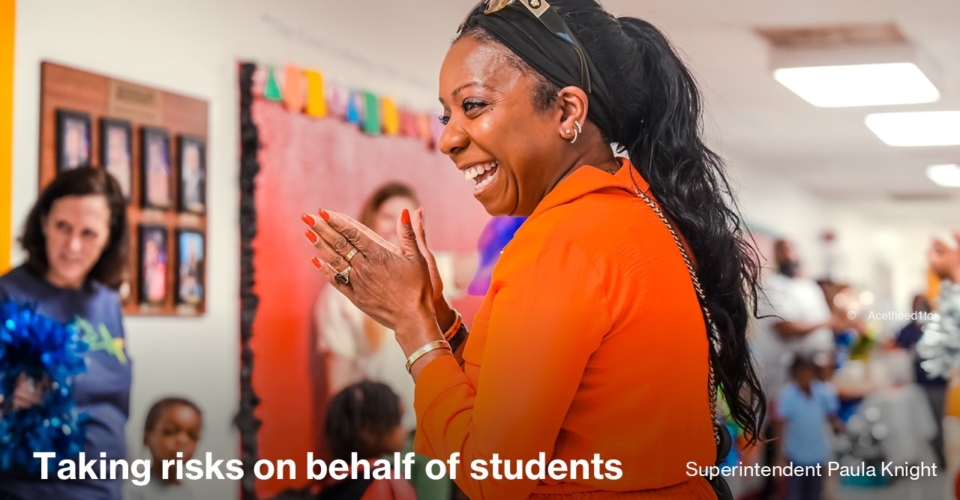Every teacher has a toolkit—a bag of strategies for delivering instruction, encouraging students to practice, helping students master a challenging concept, creating differentiated assessments, and so much more.
This toolkit is essential because not all students perform the same, learn the same way or “move” at the same pace. The learning process isn’t one-size-fits-all for students; instruction can’t be one-size-fits-all, either. It’s a challenge teachers face daily as they try to narrow the achievement gap resulting from financial constraints, cultural barriers and limited resources.
Everyone in education has focused on developing solutions to narrow that disparity in academic achievement, and over time, we’ve realized that digital technology can help. This category of tools—also known as “edtech”—is powerful because it helps educators to close that learning gap. Edtech’s biggest value proposition? It enables teachers to adapt their approaches to instruction, practice and assessment to meet the dynamically changing needs of each student at different places along their learning journey.
Enhancing teaching and learning with tech
Today’s students are the first truly digital generation; they’ve never known a world without cell phones, computers, tablets and other tech devices. Tech-enabled resources enhance the teaching and learning processes and are essential for teachers because they empower them to:
- Deliver individualized support.
- Offer extra practice to help students master their lessons.
- Allow students to work at their own pace.
- Assess and provide feedback and recommendations for other activities.
- Provide access to repositories of diverse learning experiences.
- Engage and encourage students to own their learning and build confidence.
Examples of edtech to fill the teacher toolkit
The breadth of edtech’s use cases in education keeps expanding, which is great news for teachers and students. Here are a few examples:
1. Tech-enabled utilities: These utilities support the education sector by empowering teachers to manage their courses more effectively, reducing administrative loads, increasing students’ engagement, and helping to bridge the learning gap. These utilities can supplement a core curriculum with:
- Lesson building tools.
- Calendars.
- Classroom management resources.
- Content creation tools.
Get on Board: How 2 superintendents reach out to school board candidates
2. Assessment and quiz tools: These tools help educators create and administer assessments, tests and quizzes online and often include:
- Question creation.
- Automated grading, saving teachers time and effort.
- Data analysis and reporting, enabling teachers to identify trends in student performance, identify learning gaps and make informed, data-driven decisions about instruction.
3. Game-like practice resources: Game-based learning platforms use actual games to teach educational concepts and elements like badges, leaderboards and points to increase learning engagement. Many of these products use adaptive technology to personalize learning experiences and allow students to learn and practice at their own pace. A teacher might assign review games before an assessment, for example, or to help master a new concept. Game-based learning:
- Encourages critical thinking.
- Helps students develop problem-solving skills.
- Increases student motivation and engagement.
4. Digital libraries of various learning activities: These platforms provide access to a vast collection of digital articles, interactives, textbooks, videos and other educational materials. They can be used during whole-group instruction, teacher-constructed assignments and student self-selected practice. They offer several advantages over traditional libraries, including:
- Versatility for use in any instructional scenario (whole group, small group, independent practice).
- Ensuring equity of access and scalability for a growing student population.
- Empowering students to pursue interest-based learning.
- Accessibility requiring nothing more than an internet connection.
- Cost-effectiveness because books “live” online and don’t require replacement because they’ve been damaged or lost.
- Customization to meet the specific needs of a particular school, grade or class.
When included in teachers’ toolkits, edtech resources provide tools for creating interactive lessons, tracking student progress and identifying where students need more support. It empowers teachers to offer personalized, flexible, engaging and data-driven educational experiences catering to the needs of a diverse range of learners—and it equips educators and learners to thrive in a rapidly evolving digital world.



